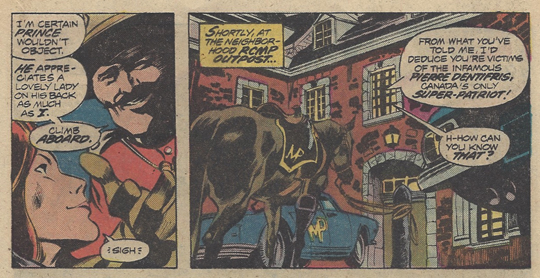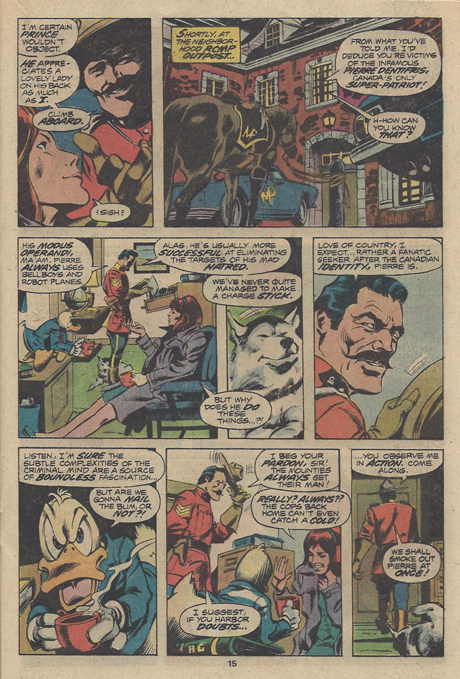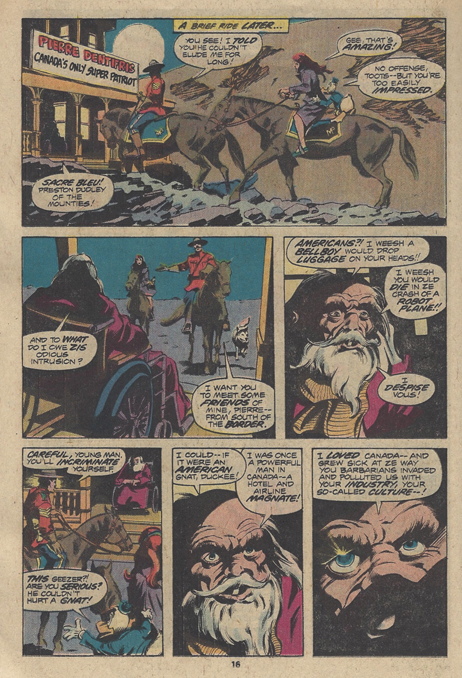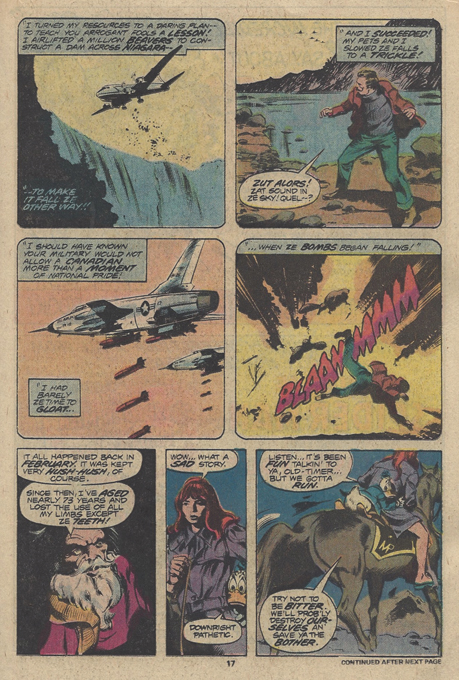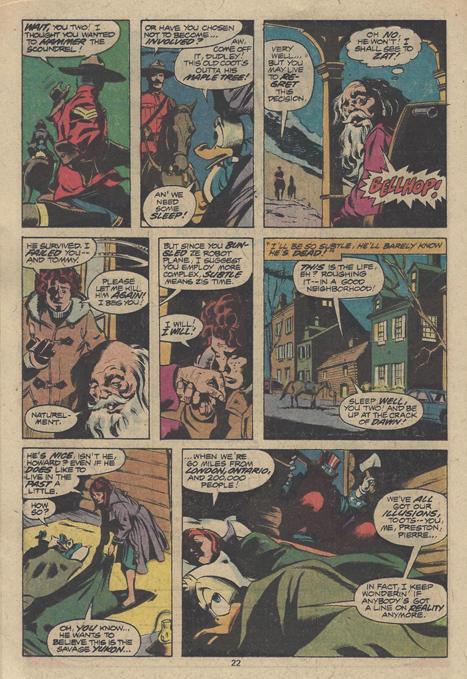Tag Archives: Beavers
A Great Canadian Moment (in American Media): Howard the Duck #9
While reading issues of Howard the Duck from the mid-seventies, one might think that Hunter S. Thomson was moonlighting as a comic-book writer. But the Fear and Loathing of it all in Howard the Duck is the Gonzo masterwork of American comic-book legend Steve Gerber. Gerber became famous (and controversial) through his bizarre creations while working at Marvel in the seventies and his use of drug-induced nightmares (including rock-band Kiss) and sexuality. Howard wasn’t really for the kiddies – as a kid, I just thought it was too weird. Now many years (but not that many) later, I am so glad to have revisited this intellectual, cigar-smoking duck. Much like wasting Orwell’s 1984 on teenagers, Howard the Duck is far more interesting with a few years behind you.
As an avid and somewhat addicted comic-book collector myself, it seemed perfectly sensible to buy up all of the Howard the Duck comics I could (#1-15 plus Annual #1) in order to read it – no trades for me, thanks. The first 15 issues had me hooked as Howard the Duck reluctantly struggles through happenstance adventure with his sexy redhead girlfriend Beverly and their weird friends. Drawn (mostly) by one of my favourites Gene Colan, they battle the likes of villains such as Turnip-Man and Kidney Lady, Vampire-Cows and Doctor Bong.
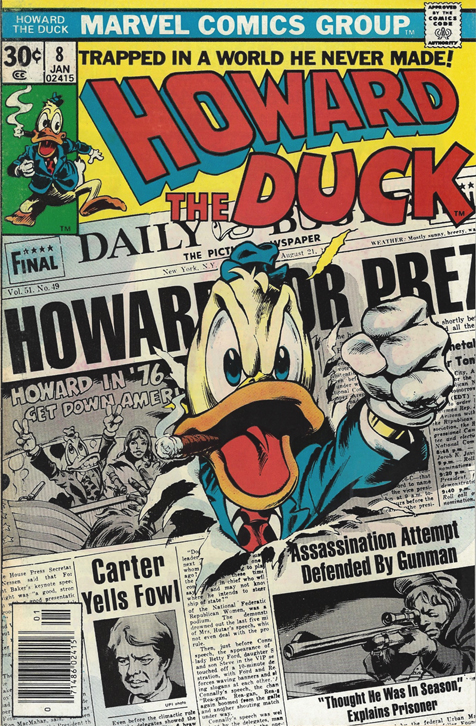
After fleeing a cult-leader and a giant gingerbread-man, Howard and Beverly arrive in New York City and get jobs at the All-Night Party convention, which coincided in the real world, with the presidential election of 1976. In Issue #7, Howard the Duck is nominated to run for President by the All-Night Party (Marvel Comics thought it would be a good publicity stunt and ran Howard in the actual election as well). In issue #9, after several assassination attempts, his reluctant campaign ends abruptly when a doctored photo is leaked of Howard and Beverly in the Tub together. Though Howard was never interested in running for president, he was outraged at the slander and the tarnishing of Beverly’s “meticulously fabricated rep” as a “good girl”. Therefore, Howard and Beverly set off to find the villain behind the assassinations, and the doctored photo.
BUT WHAT DOES THIS HAVE TO DO WITH CANADA, you must be asking?
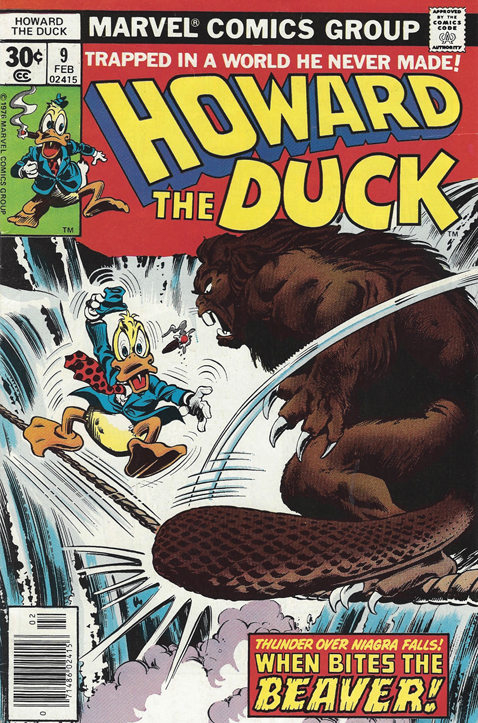
Their search leads them to…Canada! Canada? That’s right. In Canada, they confront the culprit who put a price on Howard’s head and ran their names through the muck…err, bubbles. After a 7 hour and 44 minute trip (about the time it takes to drive from NYC), their remote-controlled plane crashes near the “shore of your basic crystal clear lake overlooking the snow-capped peaks and thick pine woods commonly believed to encircle downtown Toronto”. There they meet Sgt. Preston Dudley of the RCMP and his trusty horse Prince. With the valiant Mountie’s assistance, they visit the American-hating terrorist known for using bellhops and robot-planes, Pierre Dentifris, Canada’s only Super-Patriot!
Now old and in a wheel-chair, Pierre Dentifris is confronted by the Mountie, Howard and Beverly. When asked the reason for the visit, Sgt. Preston Dudley, polite as all Canadians are, greets Pierre, “I want you to meet some friends of mine, Pierre, from south of the border.”
To which Pierre responds: “Americans?! I weesh a bellboy would drop luggage on your heads!! I weesh you would die in ze crash of a robot plane!! I despise vous!”
Sgt. Preston Dudley: “Careful, young man. You’ll incriminate yourself.”
Howard the Duck: “This geezer?! Are you serious? He couldn’t hurt a gnat!”
Pierre: “I could if it were an American gnat, duckee! I was once a powerful man in Canada, a hotel and airline magnate! I loved Canada and grew sick at ze way you barbarians invaded and polluted us with your industry, your so-called culture! I turned my resources to a daring plan to teach you arrogant fools a lesson! I airlifted a million beaver to construct a dam across Niagara to make it fall ze other way!! And I succeeded! My pets and I slowed ze Falls to a trickle! I should have known your military would not allow a Canadian more than a moment of national pride! I had barely ze time to gloat when ze bombs began falling! It all happened back in February. It was kept very hush-hush, of course. Since then I’ve aged nearly 73 years and lost the use of all my limbs except my teeth!”
Beverly: “Wow…what a sad story.”
Howard the Duck: “Downright pathetic. Listen…it’s been fun talking’ to ya, old-timer…but we gotta run. Try not to be bitter. We’ll prob’ly destroy ourselves an’ save ya the bother.”
Sgt. Preston Dudley: “Wait, you two! I thought you wanted to hammer the scoundrel! Or have you chosen not to become…involved?”
Howard the Duck: “Aw, come off it, Dudley! This old coot’s outta his maple tree!”
A few pages later, the battle takes place when Howard meets up once again with Pierre at Niagara Falls. Pierre, now dressed in a robotic beaver costume declares, “It is I, Pierre Dentifris, in ze most formidable exoskeleton ever devised by man!! Vous thought I was a helpless cripple, ze way all you Americans think of Canada itself! Well, it is not vrai! I am Le Beaver!”
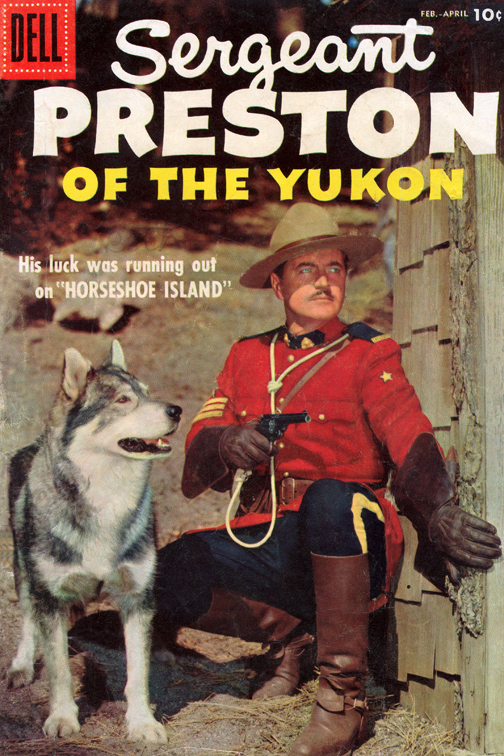
It is an endlessly enjoyable read and clearly written by someone who understands Canada enough to satirize it.
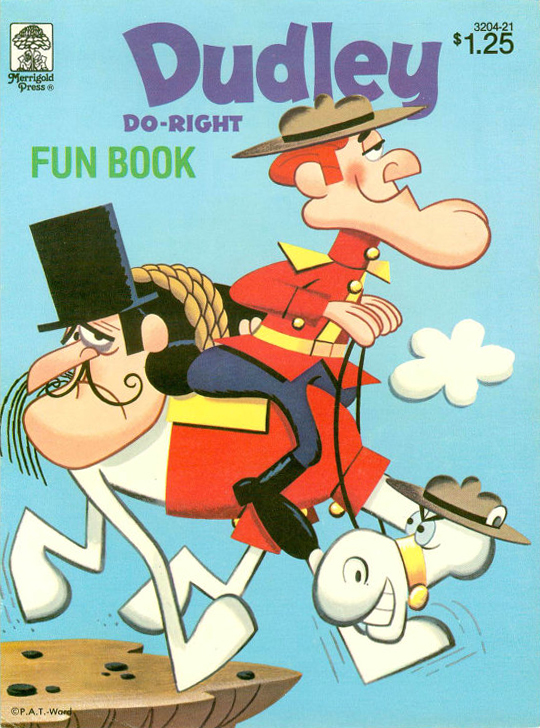
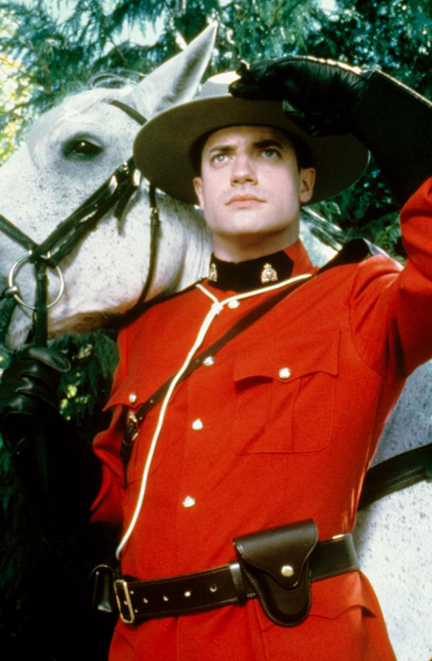
Snoozin’ at the Toronto Zoo
I went to the Toronto Zoo on Saturday figuring everyone else would be at the CNE and that was a good call. Having purchased a season’s pass for the family, we decided to investigate smaller portions of the zoo and not kill ourselves trying to see all of the 287 hectares. So, on this particular trek to the zoo, we decided to go to the Canadian area and let me tell you, from the beginning it went downhill until it was an uphill hike in the scorching heat. In the middle it was a snooze-fest in more than one way.
Here’s the Canadian checklist:
- The Lynx…asleep.
- The Cougars…asleep.
- The Grizzly Bears…asleep.
- The Moose…missing.
- The Muskox…we didn’t want to chance not making it back from that distance.
- The Eagles…were awake.
- The squirrels and Seagulls…quite alert.

The Heady Days of the Laurier Era.
In the early 20th century Sir Wilfred Laurier, one of our longest serving Prime Ministers, famously announced: “The twentieth century shall be the century of Canada. . . . For the next hundred years, Canada shall be the star towards which all men who love progress and freedom shall come.” Whether you feel that Laurier was on the mark or not, at the time of this renowned speech in 1904, Canadians were very optimistic about the future.

One of the main reasons for the country’s optimism was the enormously successful campaign to lure immigrants to Western Canada and the economic prosperity that soon followed. No doubt taking advantage of the worldwide interest in the Canadian West triggered by the discovery of gold in the Yukon in 1896, Laurier’s government embarked on an ambitious advertising campaign in Europe and America to populate this vast, near empty region. Homesteaders were offered 160 acres of free western farmland provided the land was worked and permanent residences were established on it.


The Canadian Beaver: A Dam Industrious Rodent.
When I think of the noble beaver, I think of him like one of our founders. I think of how he and his kin built this great nation one dam lodge after another. Planning out our waterways while commingling with it’s fellow future-Canadians, the Moose and Goose, the Salmon, Loon and Caribou. The great beaver deciding one day, while gnawing down a sap-oozing tree as he built the Parliament buildings, that a leaf should be the symbol for this great tree-covered nation. These proud Beavers would name the country Can-ada because the word Can’t wasn’t in a beavers vocabulary!
The beaver was only found in Canada (Castor Canadensis) and before the discovery of Canada by the French Vikings of Portugal, no one had ever seen such a creature! Travellers bringing back tales of the 12 metre-tall beast with mighty teeth that was known to raze forests and it’s paddle-like tail that could flatten man or beast. Oh, the beaver, the Great Industrious Beaver…I digress.

But seriously, the beaver is as important as any of our founders and definitely more recognizable.
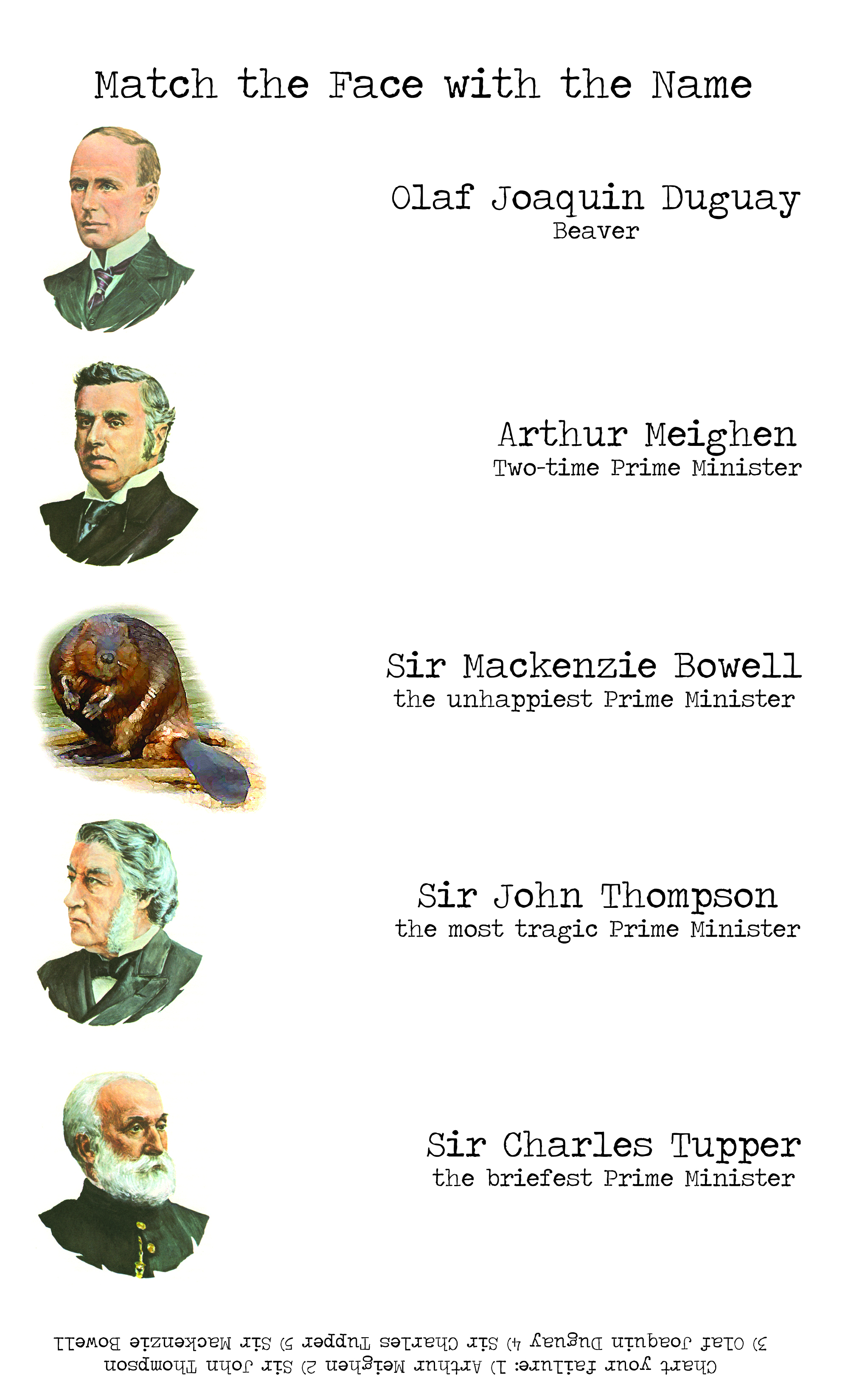
The cute little beaver has been symbolic of Canada since the first settlers came to Canada and hunted them till near-extinction. But, hey, it was before down-filled, Gore-Tex® jackets and heated cars. Let’s face it, if a fur-trade hadn’t been developed in Canada, there would have been little motivation to explore the country. The explorers who charted Canada were really just charting out where to hunt beavers.
Trade began between the Native people and the French in the 1500’s, swapping beaver pelts in exchange for cooking pots and knives. By the the early 17th century, Samuel de Champlain had come to Canada and on orders by Henry IV, the King of France, to develop the fur-trade. Before long, the English got into the fray and as the competition took off, both the French and English began sending shiploads of beaver pelts back to Europe. The industrious beaver became the industry of a fledgling nation.
In 1670, the newly founded Hudson’s Bay Company was given sole control of the Hudson’s Bay region by the English government and their territory continued to grow as they overcame many of their challengers. The fighting over beavers between French and English fur-traders became so fierce it eventually led to the The French-Indian War of 1754. The English won the war and in 1763 took over France’s North American colony. There had been an estimated six million beavers in Canada before the fur-trade began but at it’s peak traders were shipping as many as 200,000 pelts a year back to Europe. Luckily, by the 1830’s, the felt hats that beaver fur had been used for in Europe began falling out of favour and silk became a more popular choice. The fur-trade was almost entirely finished by 1870 and beavers all over Canada let out a huge sigh of relief.

As the years passed things would get better for the beaver and in 1851, one (let’s call him Olaf Joaquin Duguay) would even adorn the first Canadian postage stamp. Known as the “Three Penny Beaver” and designed by Sir Sandford Fleming, the stamp was the very first stamp anywhere in the world to depict an animal instead of a monarch!

This became trend-setting and a mere 86 years later, in 1937, the beaver, in a design by G.E. Kruger-Gray, shared it’s place on the Canadian five-cent coin where (with the exception of 1943-1945 and 2005 – damn war!) it still remains.

Suddenly, there were beavers everywhere. Besides stamps and money, they were found on product packaging, books, advertising, postcards, toys, and souvenirs of all kinds. When someone visited Canada, they always left with a little beaver. They appeared on company logos like the Canadian Pacific Railway, on newspaper mastheads and on more Government buildings across Canada that you can shake a beaver tail at. In the 1960’s and 1970’s, Canada and Ireland led the way in introducing the Beaver Scouts programme. Soon little boys (and eventually girls) began dressing in blue and brown paramilitary uniforms embellished with beavers. These little scouts saluted by hooking two fingers on each hand like claws while making tsk tsk noises with their front teeth. The beaver now had an army! Perhaps, they could form an air force comprised of De Havilland Canada DHC-2 Beaver airplanes!

Life became relatively stress-free for the Beaver until late 1954 when worry would return. The success of Walt Disney’s Davy Crockett created a new-found popularity for the coonskin cap and the beaver feared it was only a matter of time before they too would be, once again, adorning fashionable human heads. The mighty Beaver began a campaign against the fad by burning effigies of Fess Parker but as luck would have it the fad had passed by the late 50’s and the beaver was safe. A mere 30 years later their population numbers were considered stable.

On March 24, 1975 beavers were finally given their due respect when, by Royal assent, they became an official emblem of Canada. Furthermore, it seemed that some of the Canadian elite began keeping beavers as pets. It was said that the wife of former Prime Minister Pierre Trudeau, the vivacious and unsinkable “Margaret, was seen sitting in the front row at a fashion show with her pet beaver. High Society magazine reported: “…Maggie Trudeau, no longer Canada’s leading lady has guaranteed the beaver a place in Canadian culture as the national pet.”
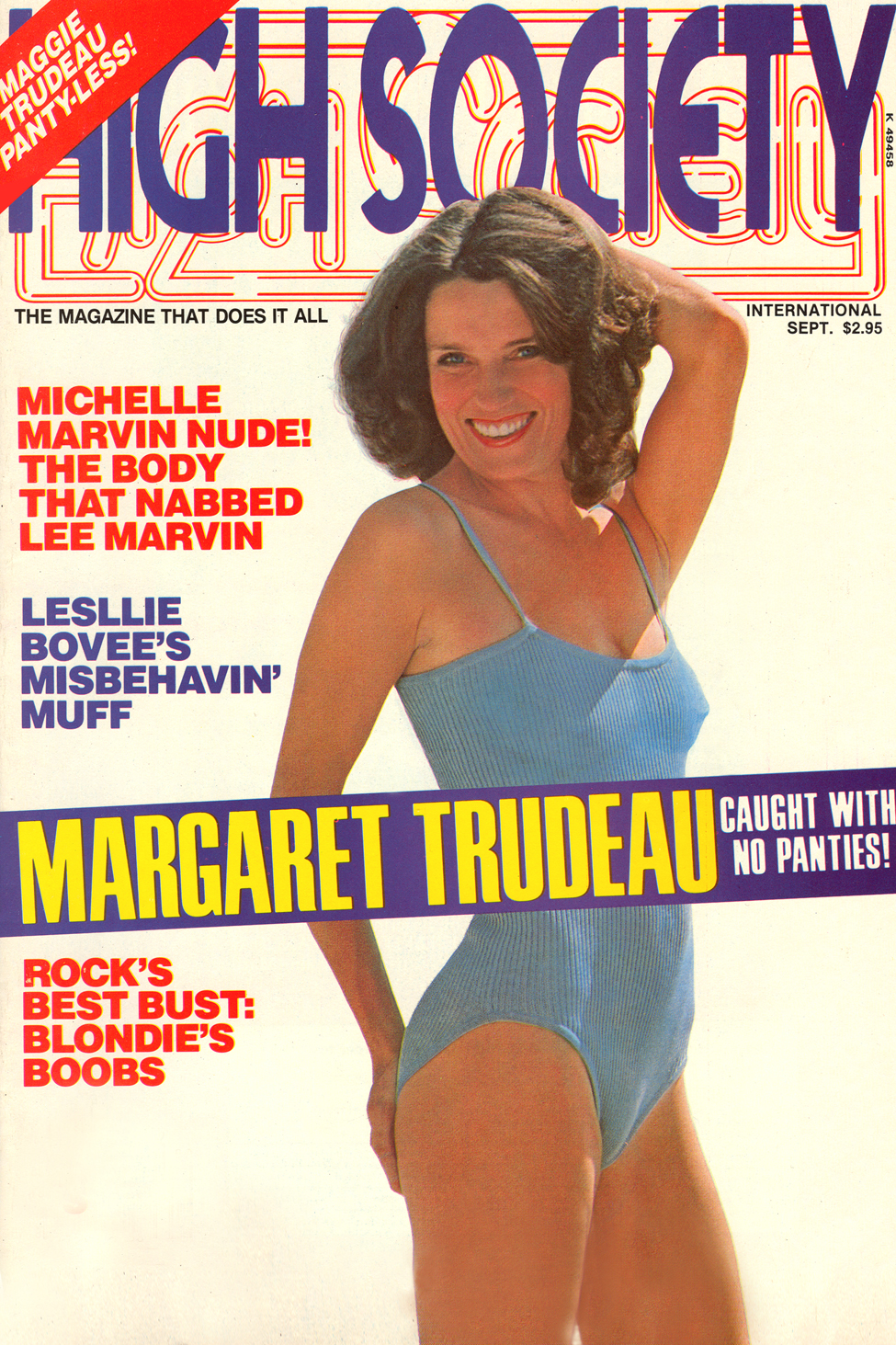
The final thing I would like to add about the beaver is that it should be said that, through all of its trials and faced with extinction at the hands of humans with cold heads, the beaver has never lost its manners or decency. The beaver is industrious, the beaver is a survivor but most importantly: the beaver is polite.
